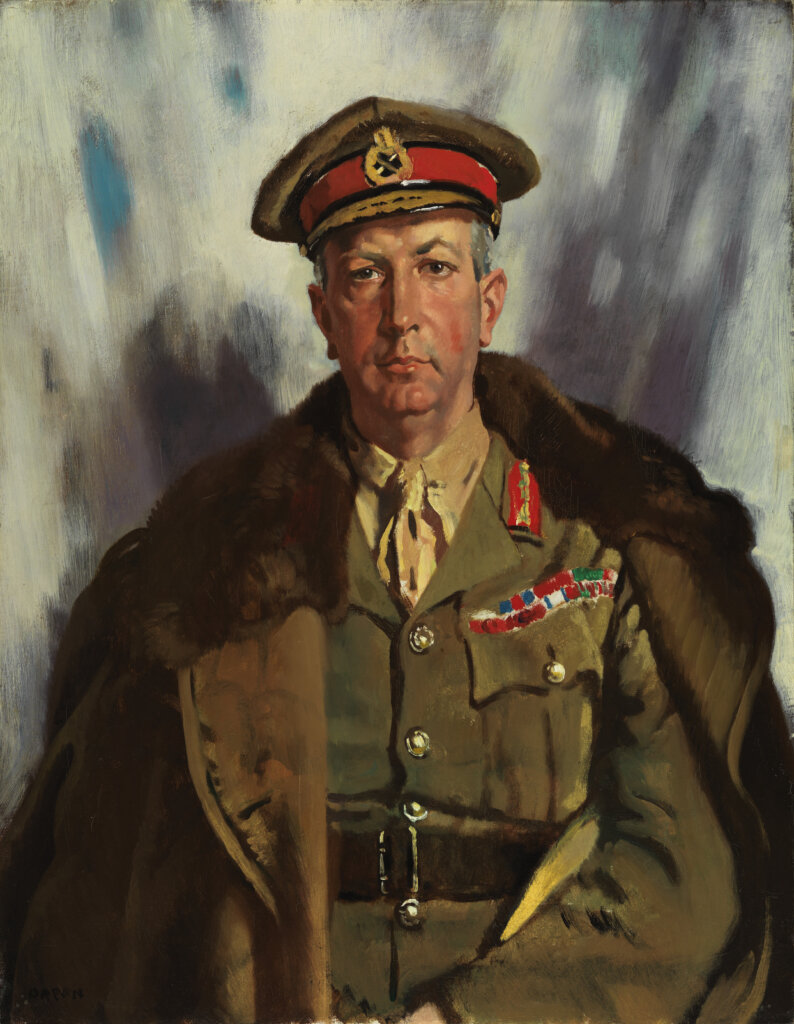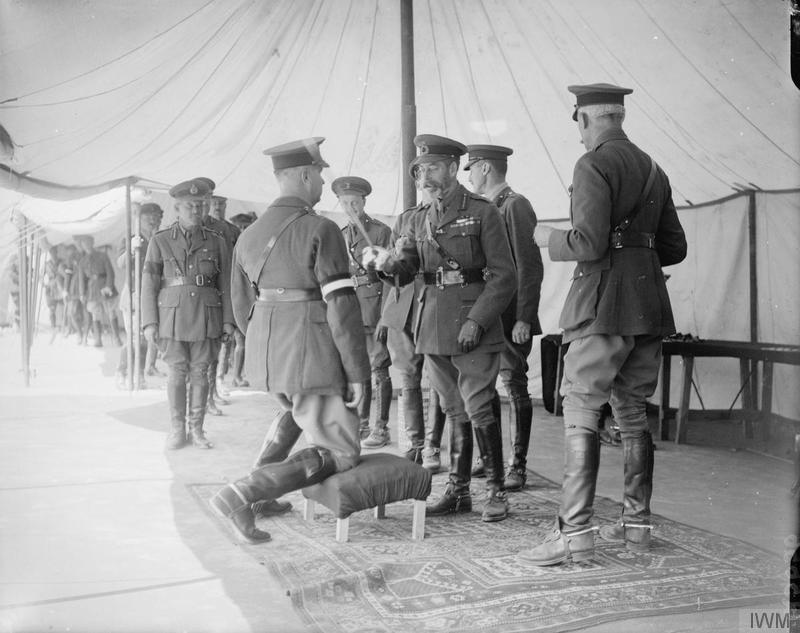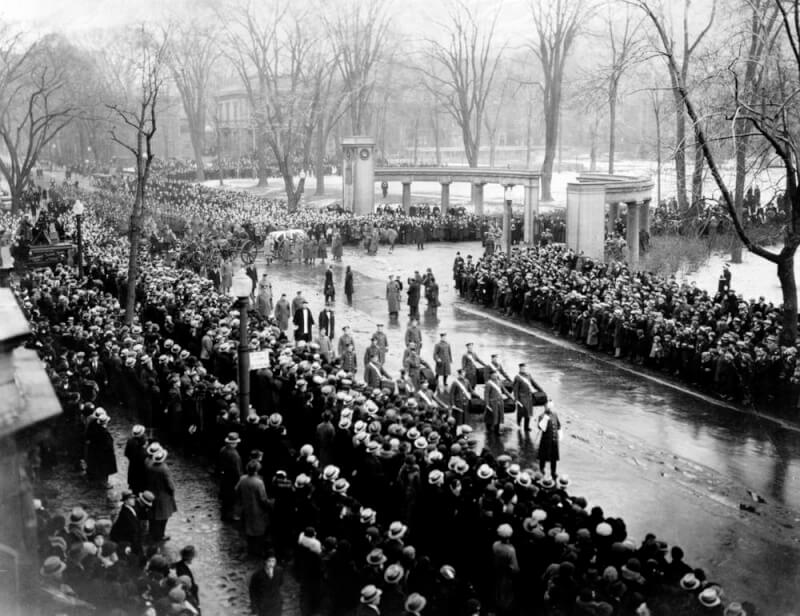
Arthur Currie painted by Irish war artist William Orpen, 1919. [WilliamOrpen/Wikimedia]
Currie didn’t seem like he had the build to become a great commander, but with the onset of the First World War, he strode onto the military scene, a dark horse presenting unique leadership that facilitated Canadian success in such famous battles as Vimy Ridge, Mons and Passchendaele. Hailed by politicians and officers alike for his tactful strategy and military knowledge, Currie created his own legend.
“The Americans have their MacArthur and Patton, the British, their ‘Monty,’” described one Canada’s History article. “Canadians, whether they know it or not, have Sir Arthur Currie.”
Still, even when marking the 90th anniversary of his death this Nov. 30, many Canadians know little of the complicated man—one balanced as equally by his faults as he is his triumphs.

King George V conferring the honour of knighthood on Arthur Currie on July 12, 1917. [Wikimedia]
“Joining a Canadian militia in the 1890s was akin to joining a yacht club.”
Born on a southwestern Ontario farm in 1875, Currie was actually Curry until 1897, possibly changing his surname to the familiar “-ie” ending after having his name compared to the Indian spice one too many times. Growing up with a strict Methodist standard, which Currie disavowed later in life, helped prove him a worthy student and orator.
The death of his father when Currie was 15, however, forced him to abandon his education and support the family by securing a teaching position in Victoria, later switching to insurance and real estate. Around the same time, he joined the local militia.
“Joining a Canadian militia in the 1890s was akin to joining a yacht club, it was mainly a good place to find business contacts and secure dinner invitations,” wrote Tristin Hooper in an article for Capital Daily.
Currie, a gunner for the Fifth Field Artillery Regiment, took on his role with law-like seriousness, devouring military textbooks, classes and exercises with an A-student’s discipline.
His meticulousness led him to rise to the rank of lieutenant-colonel by 1909. Even with such achievement, however, Currie’s financial stability remained wobbly. He invested in real estate only to become burdened by debt. So, when he was offered a command position for the 50th Regiment Gordon Highlanders and a sizeable check to buy new uniforms, Currie stole as much as $10,000 from the fund to pay off debts, a scandal that almost ruined his reputation.

Funeral procession of Arthur Currie in Montreal. [Wikimedia]
While this earned him some rivals, most military personnel celebrated Currie’s unique prowess.
But despite his blunders, Currie became commander of the Second Canadian Infantry Brigade in 1914, then the major-general of the First Canadian Division the following year. Currie was a fine leader, known for his work ethic and modernized military moves—a rarity among old-school generals. In June 1917, Currie took commander of the Canadian Corps and was knighted.
Planning offensives with painstaking accuracy, Currie never sought to waste a Canadian life, though droves of men died in battle under his leadership. While this earned him some rivals, most military personnel celebrated Currie’s unique prowess. British Prime Minister David Lloyd George said Currie was “the only soldier thrown up by the British side who possessed the necessary qualifications for the position.”
Initially, though, some Canadians felt differently. After the war, public sentiment turned Currie into a symbol of the needless death and destruction of the conflict, with one Ontario newspaper labelling him “a butcher.”
“When Currie returned to Canada, there was no fanfare for him,” wrote Craig Baird for Canadian History Ehx.
With the stress of the war’s fallout possibly weighing on him, Currie suffered two strokes, and passed away after the second in late November 1933. Since then, public opinion of him has improved, with scholars regarding Currie as having played a vital role in the Allied effort. Currie has been immortalized in statues, school and park names, and was even declared one of the greatest Canadians by the CBC.
Wrote British war correspondent Philip Gibbs: “There was something great and terrible in his simplicity and sureness of judgment, and this real—estate agent…was undoubtedly a man of strong ability.”
Advertisement





















